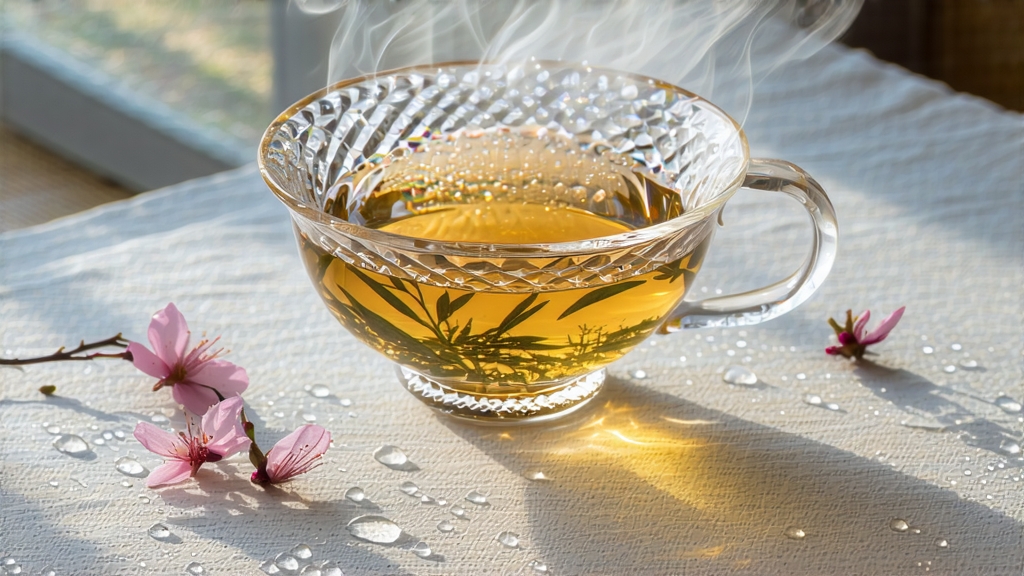
Among the six great families of Chinese tea, white tea is the least theatrical: no shaking in hot woks, no rolling until the leaves bruise and sing, no charcoal fires to tattoo the leaf with smoke. Instead, it is a tea that believes in time, air, and the patience of dusk. Within this minimalist lineage, Bai Hao Yin Zhen—translated abroad as White-Hair Silver Needle—occupies the highest rung. Composed only of unopened buds plucked for a few fleeting mornings each spring, Silver Needle is the white tea that most purely distills the Chinese ideal of “using the absence of action to achieve the greatest refinement.”
History: From Imperial Tribute to Global Muse
The first written record that can be confidently linked to bud-only white tea appears in Song-dynasty treatises on tribute tea (960-1279 CE), where “white down” from northern Fujian was steamed, pressed into cakes, and sent northward to the capital. Yet those cakes were still green-tea ancestors; the truly non-enzymatic, non-roasted white tea we recognise today did not stabilise until the late Ming dynasty, when loose-leaf infusion replaced whisked powders. Fuding county, ringed by mountains that trap humid maritime air, became the cradle of the new technique. By the Qing, Silver Needle was so coveted that county magistrates weighed each chest before sealing it with wax and imperial chop, fearful that even a single pilfered bud might betray the shortfall.
In the West, Silver Needle remained almost unknown until the 1890s, when European botanists smuggled seeds to the British Raj, hoping to replicate the flavour in Assam. The experiment failed—the bushes sulked in the lowland heat—but the name “Pekoe Tip” entered the English lexicon anyway, tangled with Indian grading jargon. Only in the last two decades, as Chinese artisans reclaimed their narrative, has Silver Needle re-emerged as a single-origin luxury, commanding prices that rival top Darjeeling lots at auction.
Terroir: Two Counties, Two Characters
Authentic Silver Needle is produced in only two micro-zones: Fuding and Zhenghe, both within Fujian province. Fuding, closer to the coast, enjoys warm days and fog-cooled nights; its buds grow plump and silver, yielding a liquor that is peach-sweet, almost lychee-like. Zhenghe, higher and more continental, produces slimmer buds with a stiffer down; the cup is more mineral, reminiscent of fresh bamboo and wet stone. Purists treat them as yin and yang expressions of the same cultivar—Fuding Da Bai Hao versus Zhenghe Da Bai—but climate is the louder voice.
Craft: The Art of Letting Go
Plucking begins when the bud reaches 2.5–3 cm but before the first leaf unfurls, a window of roughly five days. Pickers work at dawn while dew still sheathes the down, because surface moisture acts as a microscopic mirror, reflecting sunlight that would otherwise green the bud. From field to factory, the buds are never squeezed, stacked, or heated above body temperature. They are simply laid on bamboo trays stacked like bunk beds in ventilated sheds, where they wither for 36–60 hours depending on humidity. The goal is to reduce moisture to 8–10 % while oxidising enzymes so gently that the leaf structure remains intact; this is why Silver Needle can age for decades, darkening from moonlight to antique bronze without ever tasting stale.
No rolling means the bud keeps its protective cloak of trichomes—those silvery hairs that give the tea its name. Under a lens each hair is a hollow tube that once piped nutrients to the nascent leaf; after drying it becomes a fragile capsule of volatile aromatics. When hot water hits the bud, the tubes fracture, releasing a perfume that connoisseurs liken to “the scent given off by a just-split watermelon rind.”
Chemistry in Slow Motion
Because oxidation is arrested so early, Silver Needte retains unusually high levels of theanine and dihydromyricetin, compounds associated with calm focus and mild sweetness. Over years of careful storage, residual enzymes continue a micro-oxidation that converts catechins into theaflavins and thearubigins, deepening colour and adding notes of dried apricot and sandalwood. Thus a 2023 harvest may taste like pear blossom and fresh cream, while a 2003 vintage can